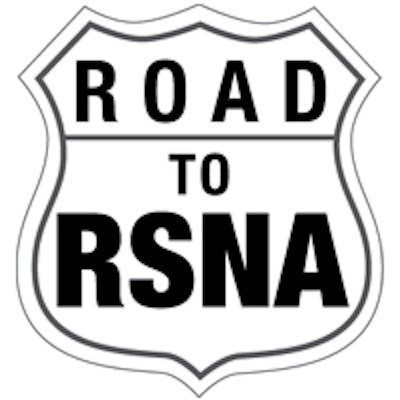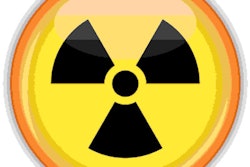
At RSNA 2016, CT will mark another year of progress in grabbing useful information from anatomy scanned at ever-lower radiation doses. Clinicians will increasingly rely on CT as they search for the image data that will nail a difficult diagnosis or chart a course to treatment that will improve patient survival.
Physicians are being aided in their search by radiomics -- the science of extracting quantitative information from imaging data that has mined CT's fertile ground to the point where it can deliver information that might previously been reserved for MRI or nuclear medicine -- or simply not available at all.
Spectral imaging, iodine imaging, k-edge imaging, photon-counting CT, iterative reconstruction, and other quantitative imaging techniques are on display in this year's sessions, offering new ways to see data hidden inside images. To take just one example, metastatic epidural spinal cord compression is a critical finding impacting survival, and quantitative CT can find it.
Also boosting quality of care are new CT hardware and software techniques that portend a faster, higher-resolution future, with a new high-resolution CT detector, for example, that captures 0.25 mm of data rather than the standard 0.5 mm for image resolution of up to 140 microns. New model-based iterative reconstruction techniques continue to capture more information with less dose.
One group is waging the image information battle with photon-counting CT, aided by k-edge imaging, to get a better look at stents. There are automated tube current modulation schemes that can cover thicker anatomy without going overboard on dose. And there are myriad ways to detect liver lesions at ultralow doses. One session at RSNA 2016 will describe a contest in which no fewer than 90 groups vied to offer the best method for lesion detection.
Another team is using spectral-shaping CT with tin filtration to get more image data from low-dose scans of obese patients. Iodine quantification is finding more applications that measure material composition, and investigators are probing its accuracy in quantifying iodine.
Functional cine CT of the heart had been all but sidelined owing to its high radiation dose. But when the technique is modified to incorporate scan delays long enough to capture image data from recirculated contrast, a fraction of the standard dose is enough to give new life to cine studies of cardiac function in the ventricles. In chest CT, scans lasting less than a quarter of a second are being used to quiet squirming children, with scans free of motion artifacts in nearly 100% of cases.
So much remains to be done. Researchers have noted that osteoarthritis research could benefit greatly if there were a better technique than digital x-ray absorptiometry to evaluate the subchondral bone. Now there is. Bone mineral density may be key to understanding the disease because it is related to load transmission.
For radiologists in Brazil, Florida, and elsewhere facing a deadly and debilitating virus that strikes pregnant women and their infants, a session on what radiologists need to know about Zika will explain CT's growing role in the disease.
Lung cancer research is finding new answers in its quest to assess nodule malignancy as thoroughly as possible before intervention. One study finds new clues in nodule features, while another sees the time of detection as potentially integral to the diagnosis.
One study looks at scans of transferred trauma patients and finds them mostly unreliable. Other sessions look at dose registries, dose measurement schemes, and new ways to incorporate organ doses into daily practice.
To view RSNA's complete listing of abstracts for this year's program, click here. But we invite you to browse through the links below to learn more about a couple dozen sessions that caught our eye. To be sure, it's only a sliver of the iceberg you're sure to run into in your own exploration. But in our eyes, the vast range of potential discoveries is what keeps RSNA among the world's great medical meetings. Enjoy!




















